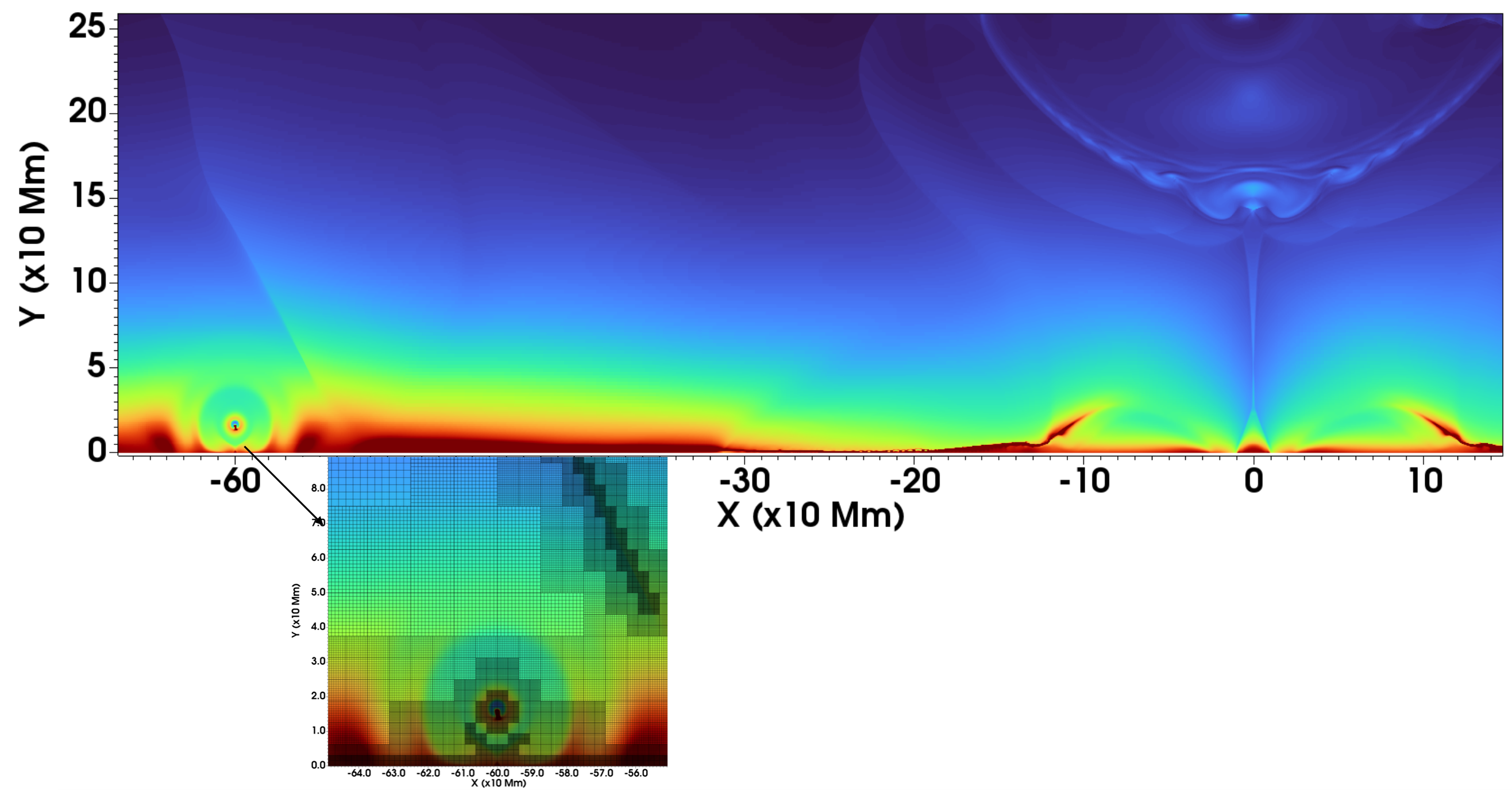Within the scope of the ERC PROMINENT project, my efforts center on the numerical modelling of prominences using MPI-AMRVAC, with a primary emphasis on studying prominence oscillations and rotations. To date, my advancements comprise:
1. 2.5D Rotational Flows in Flux Rope Prominence Cavities
We performed a 2.5D magnetohydrodynamic simulation depicting the systematic rotation of prominence within its coronal cavity, utilizing the open-source MPI-AMRVAC code. Our simulation commences with a nonadiabatic, gravitationally stratified corona permeated by a sheared arcade magnetic structure. The flux rope (FR) emerges through the convergening and shearing of footpoints, perturbed by simultaneous randomized heating at the base. This heating induces a left–right asymmetry in temperature and density distributions with respect to the polarity inversion line, generating flows along the loops prior to FR formation. These flows transform into net rotational motions upon reconnection of field lines. As the thermal instability within the FR evolves, we see a systematic rotation of both the hot coronal and cold condensed plasma, with an initial rotational velocity exceeding 60 km s−1. Synthesized images confirm the simultaneous rotations of coronal plasma, observed at 211 and 193 Å, and condensations observed at 304 Å. Additionally, the formation of a dark cavity is evident in 211 and 193 Å images. Our numerical experiment draws inspiration from observations of giant solar prominence tornadoes, revealing that the asymmetric formation of the FR plays a pivotal role in initiating rotational motions. We successfully replicate observed spinning motions within the coronal cavity, enhancing our comprehension of the intricate dynamics governing rotating prominences.
More details see here.
2. Prominence dynamics induced by a distant eruption.
Observations from SDO/AIA showed the activations of prominence oscillations with the energetic waves, often produced by eruptive events. We aim to understand how the perturbation from the eruptive event propagates at large distances and induces prominence oscillations. This is an ongoing study based on a 2.5D numerical experiment with MHD code MPI-AMRVAC using the gravitationally stratified corona, including thermal conduction, radiative losses, and background heating. The initial atmosphere is permeated by the magnetic field that consists of the dipole and the catastrophic 2.5D structure, which includes two currents and the quadrupolar background field. The converging and shearing footpoints motions serve for the formation of the prominence-hosting flux rope. The cold and dense plasma is formed according to a levitation-condensation scenario. The eruption starts simultaneously with the numerical experiment, producing an energetic wave propagating in the complex coronal magnetic environment. The prominence is entirely formed when this wave reaches it (see Fig. 1). The wave perturbs the magnetic structure, triggering prominence motions. Additionally, we obtained the synthesized images during the wave propagation and the prominence evolution. The synthesized images give additional information that can be used for future high-resolution observations.
Figure 1. Density distribution in the large numerical domain. The small panel shows the region zoomed in the prominence with the overplotted mesh.

For my former reasearch, please check my ORCiD. Feel free to contact me: valeriia.liakh@kuleuven.be.
